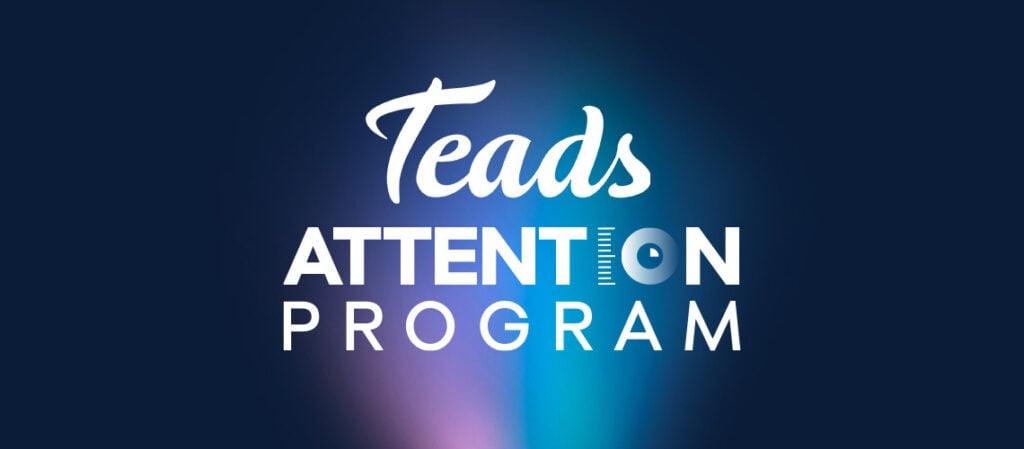
Proving Brand Lift Through Attention

Keith O'Brien
Teads’ Caroline Hugonenc has over 25 years of experience in media and research, building innovative measurement solutions. She spoke to Realeyes about the importance of partnerships in attention measurement, why everyone should start by testing and learning and how Teads and Realeyes demonstrated brand lift through attention.
Why is it attention important?
Attention is important because it's a very scarce resource. When you look at the time spent on streaming media, it’s five hours a day in the UK. And attention to ads represents only 1% of this time; it's a really little percentage. Attention is also very precious and valuable resource, so getting attention from consumers is a big challenge for brands.
We did some work with Realeyes in 2019, showing that when you can increase the volume of attention for an ad then you are able to drive a 40% increase in brand awareness lift. This is very significant and relevant as we are moving towards a difficult economic context.
| We did some work with Realeyes in 2019, showing that when you can increase the volume of attention for an ad then you are able to drive a 40% increase in brand awareness lift. |
If you can improve your outcomes by improving the attention paid to your ads, then you have one way to solve this somewhat impossible equation that marketers are facing at the moment. By using attention, marketers can really make their budgets work harder.
Obviously there are at several reasons as to whether an advertising campaign is successful, such as creative direction and where the ads are running. Do you think they need to work together or do they work best being siloed out?
That’s what I love about attention. You can use it to assess the potential of the creative, but also to decide the value of your media plan. We work sequentially at the moment. We start with the creative and do some tests with Realeyes. Then we optimize with our studio team, and we test the optimized version. Once we are happy, then we can move on to media planning. We also use the information that we get from the testing phase on which target audiences are attentive and more receptive to the message in terms of functional engagement. We use that information for the planning phase. And when the campaign is live, we are measuring attention with Adelaide or Lumen.
In the future, I would like to build the capability to predict attention, factoring in both dimensions, both creative and media, before the campaign starts, and to be able to give recommendations on optimization on the creative but also on the media plan, down to sites and placements and context.
There are several companies that are obviously leading the charge for attention, and there are definitely brands that have really embraced this. But there is a lot of the advertising ecosystem that's still trying to figure out attention, figuring out what to start. So what is the best advice for them?
For me, the best advice you can give them is to test and learn. Teads has launched this attention program, where we enable our clients to get reporting on campaigns test an ad and optimize them for attention. We are also testing with our clients the relationship between attention and outcomes. We can create best practices and guidelines for both creative and the media side.
Anything else you want to add?
I wish that the attention would expand beyond the UK, US, and Australia. I’d love to see this footprint extending to all the countries like France, for example, Italy, Germany, where the awareness is quite low on attention right now. I think it's a missed opportunity.
(This interview transcript has been edited for clarity and length.)
